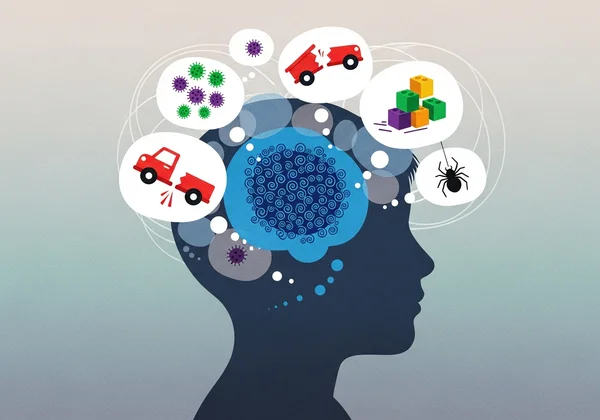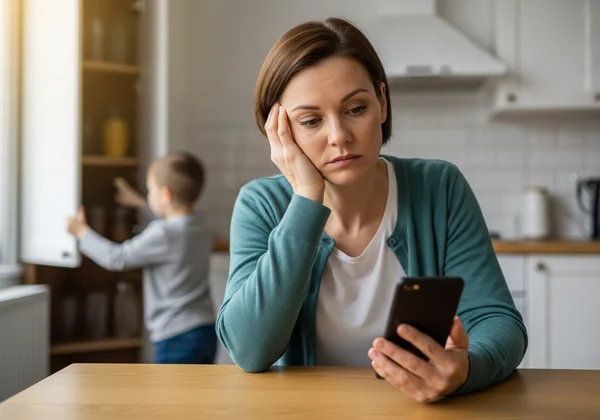OCD in Kids? Parent's Guide to Symptoms & Child OCD Test
As a parent, you watch your child develop unique quirks and phases. Some line up toys perfectly, while others have specific bedtime routines. But when do these behaviors cross the line from a normal childhood phase to something more, like Obsessive-Compulsive Disorder (OCD)? Understanding this difference is crucial for providing the right support. This guide explores the signs of OCD in children, distinguishes them from typical habits, and clarifies when to consider a screening. For initial insights, a free online OCD test offers a confidential starting point.

Recognizing Common OCD Symptoms in Children
OCD in children involves a cycle of obsessions and compulsions, similar to adults. However, kids may lack the self-awareness to explain their experiences, so parents must spot the patterns. The key indicators are behaviors that are distressing, time-consuming, and interfere with school, friendships, and family life.
Understanding Obsessive Thoughts in Youngsters
Obsessions are persistent, unwanted thoughts or urges that cause intense anxiety. A child with obsessions isn't just worrying—their mind gets "stuck" on a fear.
Common obsessions in children include:
- Contamination Fears: Intense fear of germs, dirt, or getting sick.
- Fear of Harm: Excessive worry that something terrible will happen to themselves or a loved one.
- Scrupulosity: Preoccupation with religious or moral correctness; fearing they've done something "bad."
- Symmetry and Order: A powerful need for things to be perfectly aligned or "just right."
- Forbidden Thoughts: Unwanted, taboo thoughts that cause shame and confusion.
Your child might not say, "I'm having an obsessive thought." Instead, you might see them become withdrawn, irritable, or repeatedly ask for reassurance about a specific fear.

Identifying Compulsive Behaviors in Kids
Compulsions are repetitive behaviors or mental acts a child feels driven to perform in response to an obsession. Their goal is to reduce anxiety or prevent a feared event.
Common compulsions in children can look like:
- Excessive Washing or Cleaning: Washing hands until raw or excessively cleaning personal items.
- Checking Rituals: Repeatedly checking locks, appliances, or homework.
- Repeating and Ordering: Rereading, rewriting, or arranging objects in a specific pattern.
- Mental Rituals: Silently counting, repeating "good" words, or praying excessively.
- Reassurance Seeking: Constantly asking questions like, "Are you sure I won't get sick?"
These actions are not done for pleasure; they are a desperate attempt to find relief from overwhelming anxiety.
OCD vs. Typical Childhood Habits: Key Differences
Many children have routines and superstitions. So, how can you tell the difference between a habit and a compulsion? The distinction lies in function and impact.
- Childhood Habits: Often comforting and flexible. A child might enjoy lining up cars but can easily move on to another activity without distress.
- OCD Compulsions: Rigid, demanding, and driven by fear. A child with OCD must perform the ritual. If interrupted, they become extremely agitated. The act brings temporary relief from anxiety, not joy.
If habits take over an hour a day, cause distress, or impact their ability to be a kid, it's worth exploring further.
When to Consider a Child OCD Test or Professional Assessment
Realizing your child's behaviors may be more than just a phase can feel overwhelming. The next logical step is to gather more information in a structured way. While a professional diagnosis is the only definitive way to confirm OCD, preliminary tools can provide valuable insights and help you organize your thoughts before speaking with an expert.
Signs It's Time to Seek Expert Evaluation for Your Child
Trust your instincts. The following red flags signal it's time to consult a pediatrician or child psychologist:
-
Significant Distress: Your child is frequently tearful, anxious, or irritable about their thoughts and behaviors.
-
Time Consumption: The rituals consume a significant portion of their day (e.g., over an hour).
-
Impaired Functioning: Their symptoms are negatively affecting their grades, friendships, or ability to participate in family activities.
-
Family Accommodation: The entire family has started changing its routines to accommodate the child's rituals.
-
Avoidance: Your child begins to avoid places, people, or activities that might trigger their obsessions.

How Online Screening Tools Offer Initial Insights
Before scheduling an appointment, a screening tool can be a helpful first step. A confidential child OCD test asks questions based on established principles to map common symptoms.
Taking a preliminary self-assessment can help you:
- Organize Your Observations: It provides a structured way to review your child’s behaviors.
- Gain Clarity: The results can validate your concerns and build confidence for the next step.
- Facilitate Conversation: Use the results as a starting point when speaking with a doctor.
It's vital to remember that an online test is not a diagnosis. It is a supportive tool designed to provide initial insights and empower you with information.
Supporting Your Child: Parenting Strategies for Suspected OCD
Your role as a parent is one of support and advocacy. While professional treatment is key, your approach at home can make a significant difference in your child's well-being and their ability to manage symptoms. The goal is to be empathetic without enabling the compulsions.
Gentle Communication: Talking to Your Child About Their Worries
Open, non-judgmental communication is key. Validate their feelings while externalizing the OCD, perhaps by giving it a nickname like "the Worry Bully."
Try saying things like:
- "I know that feels scary. That sounds like the Worry Bully talking."
- "It seems like your brain is getting stuck. I'm here to help."
- "Thank you for telling me. We're a team and we'll figure this out together."
This approach separates the child from the disorder, reduces shame, and shows you're their ally against the OCD.
Next Steps: Finding the Right Professional Help & Resources
The gold-standard treatment for childhood OCD is Exposure and Response Prevention (ERP), a type of Cognitive Behavioral Therapy (CBT), sometimes combined with medication.
- Exposure and Response Prevention (ERP): This therapy gradually exposes the child to their fears (exposures) while helping them resist compulsions (response prevention). It teaches them anxiety decreases on its own.
- Finding a Therapist: Look for a professional specializing in pediatric OCD and ERP. Organizations like the International OCD Foundation (IOCDF) can provide directories.
Your first step is often your child's pediatrician, who can provide a referral to a qualified specialist.

Empowering Your Child: Next Steps on Their Journey
Identifying potential OCD symptoms in your child is a significant step toward providing them with the support they deserve. As you move forward, keep in mind the crucial distinctions between typical childhood habits and the disruptive cycle of obsessions and compulsions. By observing their behavior, communicating with empathy, and seeking professional guidance, you can empower your child to manage their symptoms and thrive.
If you're beginning this journey and need a private way to assess your concerns, we encourage you to take the test on our site. It’s a free, confidential tool designed to provide initial clarity and guide your next steps. You are not alone, and with the right support, there is so much hope for a brighter future.
Frequently Asked Questions About OCD in Children
What are the common types of OCD seen in children?
Children can experience many types of OCD. Some of the most common themes involve fears of contamination and germs (leading to washing compulsions), fear of harm to oneself or others (leading to checking rituals), and a need for symmetry or exactness (leading to ordering and arranging). Scrupulosity, or fears about morality and religion, is also common.
How do I confirm if my child has OCD, or if it's just a phase?
The key difference is distress and impairment. A phase is temporary and doesn't cause significant anxiety. OCD involves intense fear, and its rituals disrupt school, social life, and family dynamics. While online screening tools offer guidance, only a qualified professional can provide a definitive diagnosis.
Is it possible for OCD in children to be cured?
While not "cured," OCD is highly treatable. With effective treatment like Exposure and Response Prevention (ERP), children can learn to manage symptoms so they no longer interfere with their lives. Early intervention is key for leading a full, happy life.